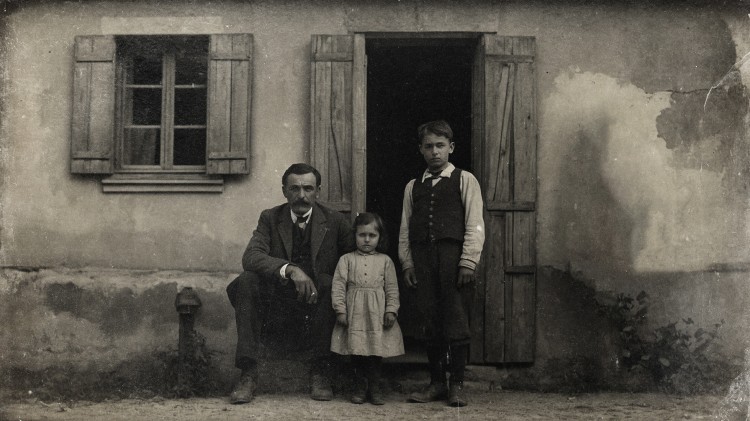
Credits: Eine Familie - LeonardoAI - Edit: maigret.de
Adopted
The clairvoyant was dead. Maigret's most important witness in the case, Joseph Mascouvin, had thrown himself into the Seine and was seriously injured in hospital. The newspapers had a lot to report. A young woman got ready in her apartment and went to the police. Mademoiselle Janiveau was able to help, she was the stepsister. Wait, what about the names?
He Mascouvin, she Janiveau. How could that be possible if - as his sister said - he had been adopted by her parents? Wouldn't the first assumption be that his adoptive parents had »imposed« the family name on him? If only to show that he was part of the family and not just someone who had been given a favor?
There they are again, the standards that are projected from today onto yesterday. Without having any statistical values, I would say that today there are three reasons to have a child: There is a desire to have children that cannot be fulfilled naturally. Certain circles want to arrange the succession and/or not »waste« the assets on the state. The motivation to do something good for someone is comparable to the first category.
In ancient times, adoption was possible under both Greek and Roman law. But after this era, it faded into the background in Europe and was frowned upon.
In France, it came back into fashion with the French Revolution. Previously, adoption had been handled very restrictively - adoption was only possible if the child had saved the adoptive father's life or if minors had been cared for in a family for six consecutive years. The question was, however, with what motivation they were carried out after the regulations were relaxed. According to sociologist Martine Court, boys between the ages of eight and ten were often adopted in the 19th century. The reason for this was not so much that the adoptive parents believed that there would be fewer problems in the following pubertal years. They were seen as cheap labor.
The sociologist identified the 1920s as the threshold in which the drive to adopt shifted away from a purely economic aspect. Now the focus was on happiness - hopefully of the adoptive parents and the adoptees.
In France, there are two forms of adoption: simple adoption and full adoption. In the case of simple adoption, the relationship between the child and the family of origin remains intact. The child can be given the name of the adoptive parents or the family name can be added. The inheritance rights in the line of the family of origin are retained.
In the case of a full adoption (also called adoption plénière), all ties of descent are broken and there is no longer any contact with the biological parents. This process is irrevocable. This means that the family name of the adoptive family is taken over. Another significant difference to a partial adoption is that a »reversal« is possible under certain - by no means simple - circumstances. Normally in France, the adoptee must be under the age of fifteen for such an adoption.
If you look at these differences in the adoption procedures, it becomes clear why Mascouvin and Janiveau had different names, even though they came from the same family. The parents had opted for a partial adoption, and in this case it was not necessary to change the boy's surname.
Adoptions cannot be lumped together. This is only a (rudimentary) description of the various adoptions that exist in France. Just because this or that is permitted in one country, it must be handled in the same way in another. This includes the fact that the social acceptance of adoptions depends on the country and culture. If you read through the articles on this topic at your leisure, you may end up with a headache.




